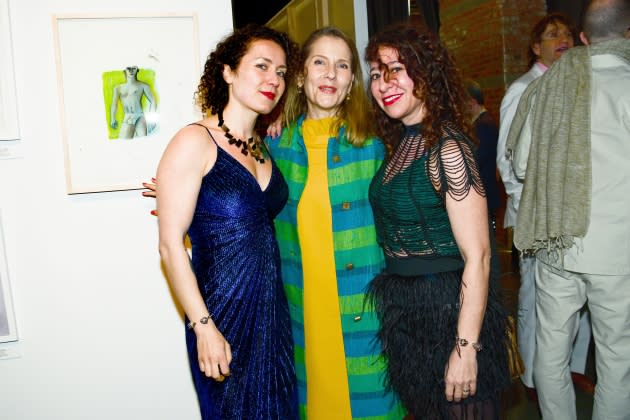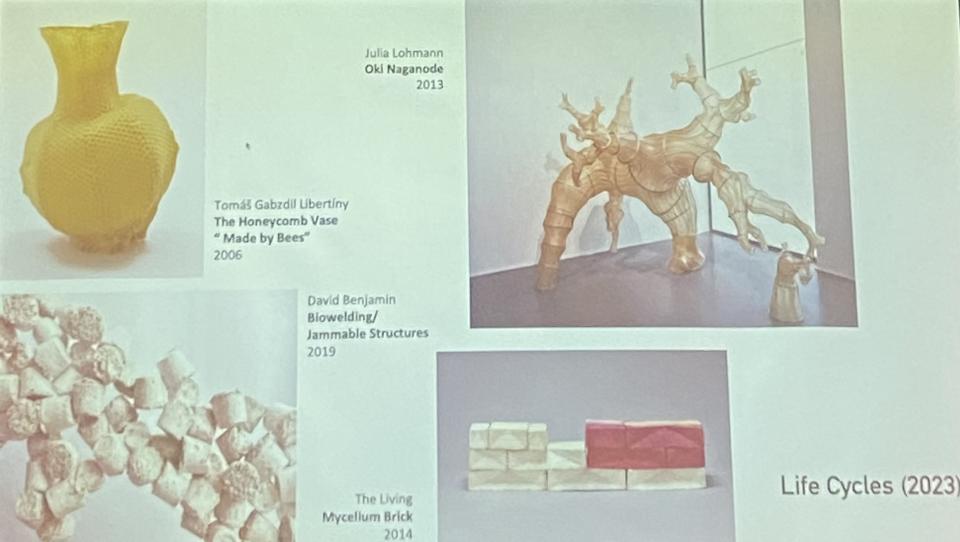A First Look at MoMa ‘Life Cycles’ Coming September 2023

NEW YORK — A new natural materials design exhibit titled “Life Cycles,” coming to the Museum of Modern Art in September 2023, is sure to inspire eco-enthusiasts.
“It will be a completely different show,” Paola Antonelli, senior curator of design at the MoMA, said during a keynote presentation at the Global Design Forum at The Standard in New York Tuesday. The forum was held in partnership with SAP.
More from WWD
“Today, if we were designing our goals to be more sustainable, more economical, more responsible — then the means also have to be redesigned. That’s why materials are so important to us,” said Antonelli of her aim with “Life Cycles.” “Everything is connected. By thinking of materials in a different way, we can also influence the culture. And by thinking of traditions and local cultures, we can come to new realizations and new wisdoms about the materials that we now need to use in the future. That’s what makes me so happy is to see how everything comes together. Materials contain memory.”
Aptly named “Life Cycles,” the exhibit arrives Sept. 2 to the MoMA and builds upon Antonelli’s previous exhibitions, like the “Mutant Materials” (about the evolution of design materials) from 1995 or “Neri Oxman: Material Ecology” (exploring silk fiber) from 2020, and her ongoing fascination with sustainable materials. Everything from electronic waste-made furniture, honeycomb, mycelium, corn to algae will be included in the exhibit.
Some highlights, teased at the forum for their design versatility, include Julia Lohmann’s “Oki Naganode” (2013), an organic structure composed of seaweed, aluminum and rattan; Tomáš Gabzdil Libertíny’s “The Honeycomb Vase ‘Made by Bees'” (2006), a honeycomb-printed beeswax vase, and “The Living Mycelium Brick” (2014).

“Mycelium is one of the heroes of contemporary materials,” said Antonelli. “You’ve seen it as packaging but it also becomes bricks, which we also erected in a tower at PS1, at MoMA, a few years ago.” The material has made its way into fashion collaborations with Stella McCartney, Adidas (remaking the iconic Stan Smiths in mushroom leather) and the like, and today, plastic-eating mushrooms are part of vibrant discussions and scientific discoveries for reducing plastic waste.
Only an estimated 30 percent of the world’s population live in buildings made of mud or dirt, which is a stark contrast to the concrete buildings that dominate modern architecture. Exploring restorative design strategies — among them reducing consumption, rethinking waste, increasing empathy and supporting voluntary digital exile — will be key throughout the exhibition.
In her keynote speech at the forum, Antonelli also spoke of her inspiration from the philosophies of Mahatma Gandhi, who championed that consumption of resources be found locally or within a five-mile radius. Many of the designers who will be featured in “Life Cycles” also delve into the principle. Designers span Adhi Nugraha (an Indonesian designer whose latest material fascination is cow dung to transform waste into tasteful, minimalist items like lamps), Vinu Daniel (behind “Wallmakers,” which is a design project using mud and waste to build new utility in architecture) and Xu Tiantian (owner of DnA firm and designer of the Wang Ziling “Bamboo Theatre”).
As a celebration of hope, Antonelli referenced the current large-scale restoration projects that inspired the exhibition. She pointed to Africa’s “Great Green Wall,” an initiative spearheaded by more than 20 countries to increase the amount of arable land in the Sahel region bordering Africa’s Sahara Desert, and the “emblematic” project of turning waste to green space that is The Fresh Kills Landfill in New York City’s Staten Island.
“In the end, [the exhibit] is about memory, it is about life cycles, it is about materials considered not simply as plastic and wood, but the materials that are in existence,” she reiterated.
Best of WWD


